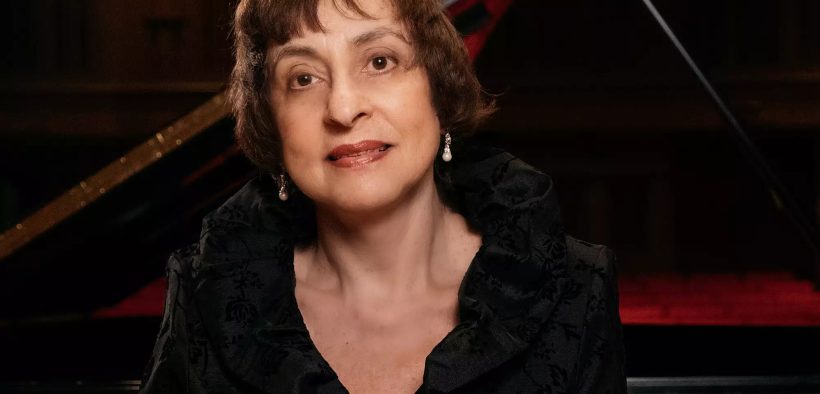Harpsichord & Piano: Gilmson Graces the SU Stage
Share

At the Alma Thomas Theater on Tuesday, October 7th, the Sarofim School of Fine Arts held a performance by pianist Sophia Gilmson. She performed a recital made up entirely of pieces by Jean-Philippe Rameau (1683-1764) on harpsichord and their transposed versions for piano by Leopold Godowsky (1870-1938). The program ran for an hour with no intermission.
Sophia Glimson is a Russian pianist who has won several honors and awards throughout her career, including First Prize in the Young Artists Competition and the Mount Everest Award. She is currently Emeritus Professor of Piano at the University of Texas Butler School of Music in Austin. In the performance, Glimson showed off her lively personality, engaging with the audience between each piece, offering information about the music and its composer.
Glimson plays both piano and harpsichord, a medieval-sounding instrument very similar to the piano. The harpsichord’s strings are plucked instead of struck, creating a very short and light sound, characteristic of the Baroque period. The weakness of the harpsichord, however, is that, no matter how hard a player would strike the key, the instrument would always play at the same volume. The instrument’s inability to perform dynamics is what caused its inevitable replacement by the piano, created in 1698.
Jean-Philippe Rameau was a French composer and theorist from the Baroque period. He wrote about 30 stage opera works and several harpsichord pieces throughout his career. He wrote his last musical tragedy, Les Boréades, at 80 years old. He also penned an impressive collection of theoretical works before his death in 1764. Glimson played only Rameau pieces to show off the beauty of the harpsichord and educate the audience about Baroque music.
Glimson opens the recital with Rameau’s “Two Sarabandes” on the harpsichord, followed by its “Sarbandes in E Major,” piano transposition to display the difference of the sounds. She later plays “Rigaudon and Trio in G Major” and “Two Minuets”, which were each followed by their piano transpositions (“Rigaudon in E Major” and “Minuet in A Minor”), like the original piece. The most interesting piece was definitely “Two Gigues.” A gigue is a lively dance song from the Baroque period, with an upbeat melody and quick pace. However, Godowsky’s piano version, titled “Élégie in E Minor,” is significantly slower and has a deep melancholic mood. This was a very odd take for this gigue and provided a wonderful contrast in the performance. Glimson ends the recital on a high note with “Tambourin in E Minor” on harpsichord. She handed two tambourines to the audience and used their participation to help the piece come to life.
Don’t miss out on upcoming performances from the Fine Arts Department! In November, there will be a Percussion Ensemble performance (Nov 11/2), the theatre production of Men on Boats (Nov 7-9 & 14-16), and a Musicale (11/14). We hope to see you there to support your fellow Pirates!
